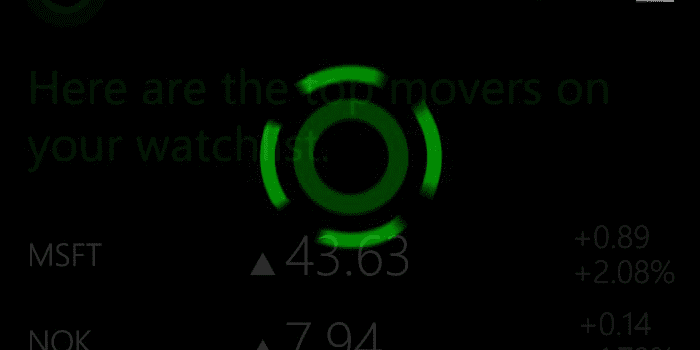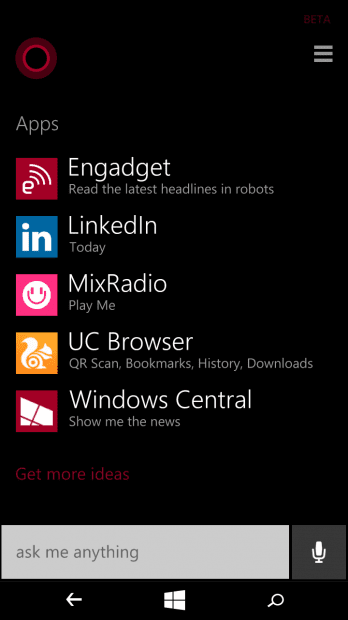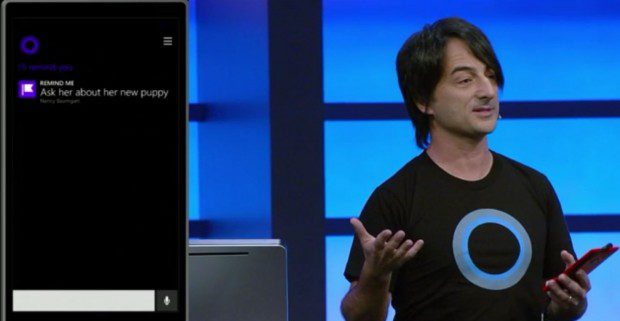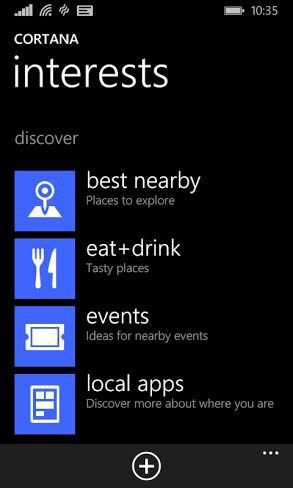Can the real Cortana please stand up?
11 min. read
Published on
Read our disclosure page to find out how can you help MSPoweruser sustain the editorial team Read more

Earlier this year I wrote a review of Cortana. It still applies right now to the US version and I’ll paste it below.
Microsoft Cortana : Gaming Fantasy becomes Mobile Reality
Last weekend was an important family event, so my Aunt texted me to ask for my postcode. Feeling lazy, or perhaps having become acclimated to a new convenience, I reached for my phone, activated Cortana and said “Text Aunty XXXX and tell her {Postcode}”. Less than five seconds later, the text was sent off.
That is the comfort of the New Microsoft Cortana; a digital assistant which ships in new Windows phones running Windows Phone 8.1.
Those of you who plays games should find this name familiar. Yes the name Cortana is a homage to the sidekick Cortana of Halo fame. Cortana herself will gladly tell you if you ask her. As for how the name became attached to the digital assistant, it’s a funny tech story.
Cortana was actually an internal code name for the A.I and the final name hadn’t been decided yet. Late 2013, it was leaked that Microsoft was testing a personal assistant named Cortana. A petition was launched on the Windows Phone user voice site to keep the name, and that tipped the scales internally.
Now many sites have actually done reviews of some kind of Cortana, this is different. I didn’t set out going into review mode. Rather, I used my phone as naturally over a period of two and a half weeks, integrating Cortana where it felt best.
About Cortana
Cortana exists as an animated circle which pulses and spins in response to queries. It lives either on the Start screen, in the app list or in the search button. Pressing the Search button brings up a landing page from which one can search, view your “interests” (more on that later), holding it brings her up in listening mode.
One thing about Cortana that differentiates her for Siri and Google Now is her “notebook”. This notebook is where all data about you is stored. Who your close friends and family are, where you live, work and other details. The beauty of this is that it does these rudimentary tasks automatically. When I moved to enable a feature known as quiet hours (do not disturb mode), Cortana correctly identified a number of people I’d like to be able to communicate with, even at night.
After two days, a notification popped up asking me about where I work. It had been correctly identified even though I had disabled Cortana on my phone for a while before I fully engaged with it. For those who find this convenience intrusive, Cortana’s notebook allows you to let her “forget” things you’d rather her not know. Microsoft assures us that this data stays localized to your phone and is not uploaded to the cloud, to avoid any privacy issues.
Using Cortana
Once Cortana has been accessed, you can use her either by speaking or typing into the search bar. She understands my speech really well, though I talk fast and have an English accent. As for Cortana she is both in Beta and configured for the US of A. Again Microsoft assures us that it’ll be released in the UK and China during the second half of the year as well as come out of beta, so that shouldn’t be much of a downside. Those not in the USA can simply get it by changing their phones’ region to the USA, which has the negative of restricting you from purchasing apps in any currency but dollars.
My first voice command to Cortana was “I’m hungry”. Impulsive, spur of the moment and true, it was up to Cortana to respond to this primal human desire. And respond she did, she surfaced a list of restaurants in the area . A follow up command was understood really well. Not a robotic command or anything pre-programmed, but natural speech like “which one stays open”, “what’s the latest time I can get there” and “which one’s the best”. Of course, the difference between “I want a sandwich” and “I want to eat a sandwich” is the difference between a list of sandwich shops and a web search on the term “I want a sandwich”.
On the more hilarious side of things, my request around the term babysitter was transcribed as face-sitter. I’d never closed a search page that fast in my life.
The question I wanted to know of course, was whether Cortana was better than Siri or not. Since Cortana confirmed to me that she helps save the world in a few hundred years, I concluded that a superhero digital assistant was better than one tied to fruits (not really).
When the Amazing Spiderman 2 came out that week, like every other geek, I decided to see it. When asking Cortana about it, I was queried whether I would like that to be included in my interests. that is, a list of things I’d like to be updated on. I’m almost certain Siri lacks this functionalty and Google’s own Google Now would just assume that I want to receive updates about it forever. Being asked places control in the hands of the user, and being updated about your favorite interests at the push of a button is a convenience you don’t miss till you have it.
Another utility which I made use of during my two weeks of testing was it’s reminder feature. You see, while Cortana was able to remind people when to leave home and when to head back to work, I never stick to a planned schedule. Though Cortana does have enough grasp on my schedule to know when I should be going to work and back, so that when I’m late automatic directions appear on Cortana’s landing page, it has never been sent me an alert at a specific time to get going. In addition, this instability in my movements ends up making reminders based on time practically useless to me. Luckily, the inbuilt location reminders came in handy, allowing me to set reminders which activated when I entered or left a place, usually by voice. Reminding myself to buy headphones when I left school and at Holloway road was just the matter of two voice commands. However, setting the reminder for Holloway road was slightly more complicated than when leaving work ending with me manually inputting the address. This slight imperfection broke the otherwise seamless experience.I could also use Cortana to do the general things like setting alarms, playing music, launching apps and even jumping straight into an app. For example, I was able to jump directly on a page in the app about direct realism just by using Cortana. The only problem is the apps, as far as I can see, don’t all support the natural language features and a fallback to stilted, scripted commands was necessary.
Overall, before carrying out this little experiment I had already figured that Cortana would be a gimmick which I would use for a week and then drop. That hasn’t been my experience at all. Despite minor flaws here and there, I have been able to integrate her into my day-to-day use of my phone successfully. Siri is unfortunately still a bolted on addition in my experience of the iPhone and the experience of people I know. I believe the test of a true digital assistant is its ability to intelligently act without your input while you still remain in complete control. Cortana passes that text and I think I’ll hold onto her a little longer.
Those were my original words after using Cortana for two months. Now however, my feelings have changed. Not because Cortana has changed mind you, she works great for those in the “right” country, for those of us “foreign” people, Cortana is a shadow of itself. These are my thoughts on the UK version compared to the US one. For my feelings on the US one see above.
First off, let me deal with any objections which people may use to try to distract from the point of this piece.
“It’s an alpha” – I’m in the UK, it’s a Beta
“Well, it’s a beta expects bugs” – The US version is also a Beta, should I be faulted for expecting similar quality?
“Its dev preview so devs can test their apps” – I’m running Lumia denim on a 735
“It needs to be localised “– This is actually both legitimate and illegtimate for reasons I’ll come back to later on.
It’s not available on many devices – The 930 (in the UK and without Lumia Denim), 830, 735, 535 and Ativ S devices all run WP 8.1.1 by now.
Anyone who lives in the UK – London – especially should know that Microsoft has been pushing Cortana pretty hard. Several tube stations have huge banners of the Microsoft Lumia 735 with Cortana being placed prominently. Phones being sold in stores have a *Cortana now available or *Cortana coming soon sticker on them. So for a feature that Microsoft has been pushing really hard, you’d think it’d actually be good.
It is not.
Compared to the US Cortana, it is frankly terrible.
First of all, Cortana’s voice processing isn’t as good. It defaults to the internet search most of the time. More frustratingly, it can sometimes take a perfectly coherent sentence like “Turn on Quiet Hours” which it understands perfectly and shows on the screen, then converts it to something else “Call Guardian news”. Even when it does do internet searches, it uses Bing. Bing is a four letter word(it is, count the letters) .I use Bing on my Surface Pro 3, but I set it to US Bing. Why? Bing is rubbish outside the US. I would absolutely love to use US Bing on my phone, but changing region settings and disabling all purchases isn’t as attractive.
On the localisation issue, Microsoft has done a great job changing Fahrenheit to Celsius and reminding me that Brits refer to phone calls as putting someone “on the horn”(I did not know this). For transport, it incorporates the tube and bus routes (although the route suggestions are bonkers). So at least there’s that.
On the other hand, Facebook had an update a while back that enabled Cortana support. I know this because I read it online. If I switch to US Cortana, this shows for me. If I switch back to UK Cortana, this option vanishes. It’s not limited to Facebook. Several apps that worked with the old TellMe system have now lost their ability under the UK Cortana system. I don’t see a reason for this. Do people in the UK just not use Facebook? Or telemetry data informed Microsoft that UK users don’t like voice commands? Whatever the reason, it is definitely an idiotic decision.

Then we take a step to the dashboard. I once praised Cortana’s dashboard for being useful and helping me with surfacing information and news. Not anymore. I get two items a day if I’m lucky, most times none. Its noticeable because the MSN news app and the MSN website should all rely on that same back-end to push news according to my interests, yet the latter two do and Cortana does not.
Add that to the ever increasing list of US exclusive Cortana features and you get the feeling there’s a bait and switch being played here. The app is called Cortana, it looks like Cortana, it doesn’t sound like Cortana but it lives in her room and answers her name. “Can the real Cortana please stand up?” is what I think whenever I use not!-Cortana on my Lumia 735.
There isn’t a single thing that the UK Cortana does better than the US one to justify this vast chasm in functionality(It didn’t even remind me it was Surur’s birthday today). That’s puzzling.
I don’t use Cortana anymore because of the UK version. I’m not willing to restart my phone three different times just to have to restart anytime I want to buy an app. As it stands now, it doesn’t provide any added value to my experience of Windows Phone. For a feature that is being pushed like the next best thing since sliced bread, it is pretty underwhelming. Especially when compared to itself.










User forum
0 messages